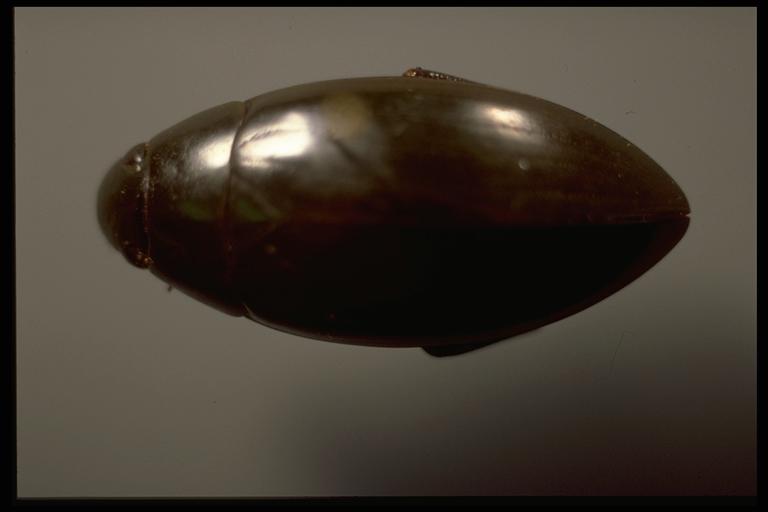
A water scavenger beetle, (Coleoptera: Hydrophilidae). Photo by Drees.
Common Name: Water scavenger beetle
Scientific Name: Varies
Order: Coleoptera
Description: Adults have short, clubbed antennae which are sometimes hidden beneath the head. Their mouthparts (maxillary palpi) are elongated and hair-like (filiform) and may be mistaken for antennae. Most species have a conspicuous keel or ridge between the legs which extends backward into a point. The hind legs have long hairs that aid in swimming. Their bodies are usually not as flattened as predaceous diving beetles (Coleoptera: Dytiscidae) with which they can be confused. They surface for air head first and trap air to breath under the wing covers (elytra) and “row” by alternating the hind legs, producing a wiggle from side to side as they swim. They range in size up to 1-1/2 inch (40 mm). Larvae may be up to 2-3/8 inches (60 mm) long. Their jaws (mandibles) are usually toothed. The abdomen often has a wrinkled appearance and often has long filaments extending from the sides (some predaceous diving beetles also have filaments). The tail filaments are usually short.
Life Cycle: Egg-laying (oviposition) sites vary, although females of a few species carry eggs on their bodies. Some species of males stridulate or chirp to locate mates. Pupation is generally terrestrial.
Habitat and Food Source(s): Mouthparts are for chewing. They are usually found in ponds, shallow lakes and along the shoreline of flowing water, although one subfamily is found in dung. Adults are general feeders or feed on decaying organic matter (omnivorous or detritus feeding) but a few are predaceous. Most larvae are predaceous, although some feed on plants. Adults may be found at lights.
Pest Status: Water scavenger beetles are not pests but the large species may be noticed.
Management: None, this is a beneficial insect.
For additional information, contact your local Texas AgriLife Extension agent or search for other state Extension offices.
Literature: McCafferty 1981.